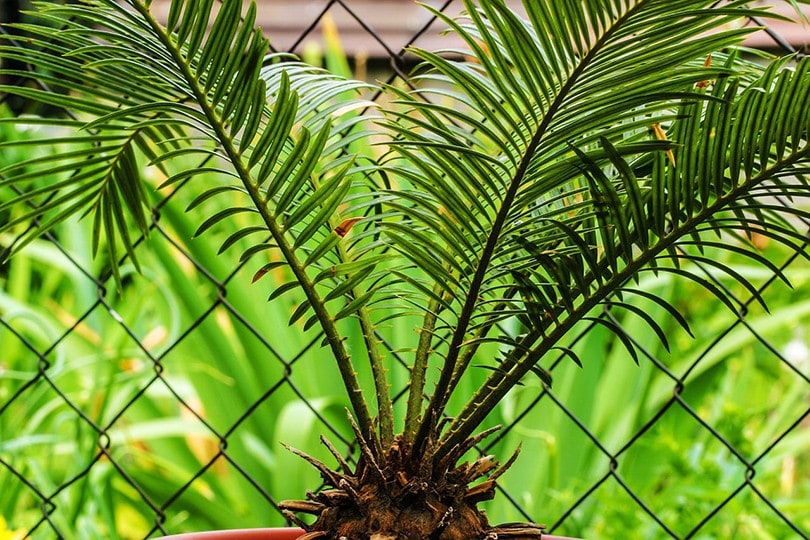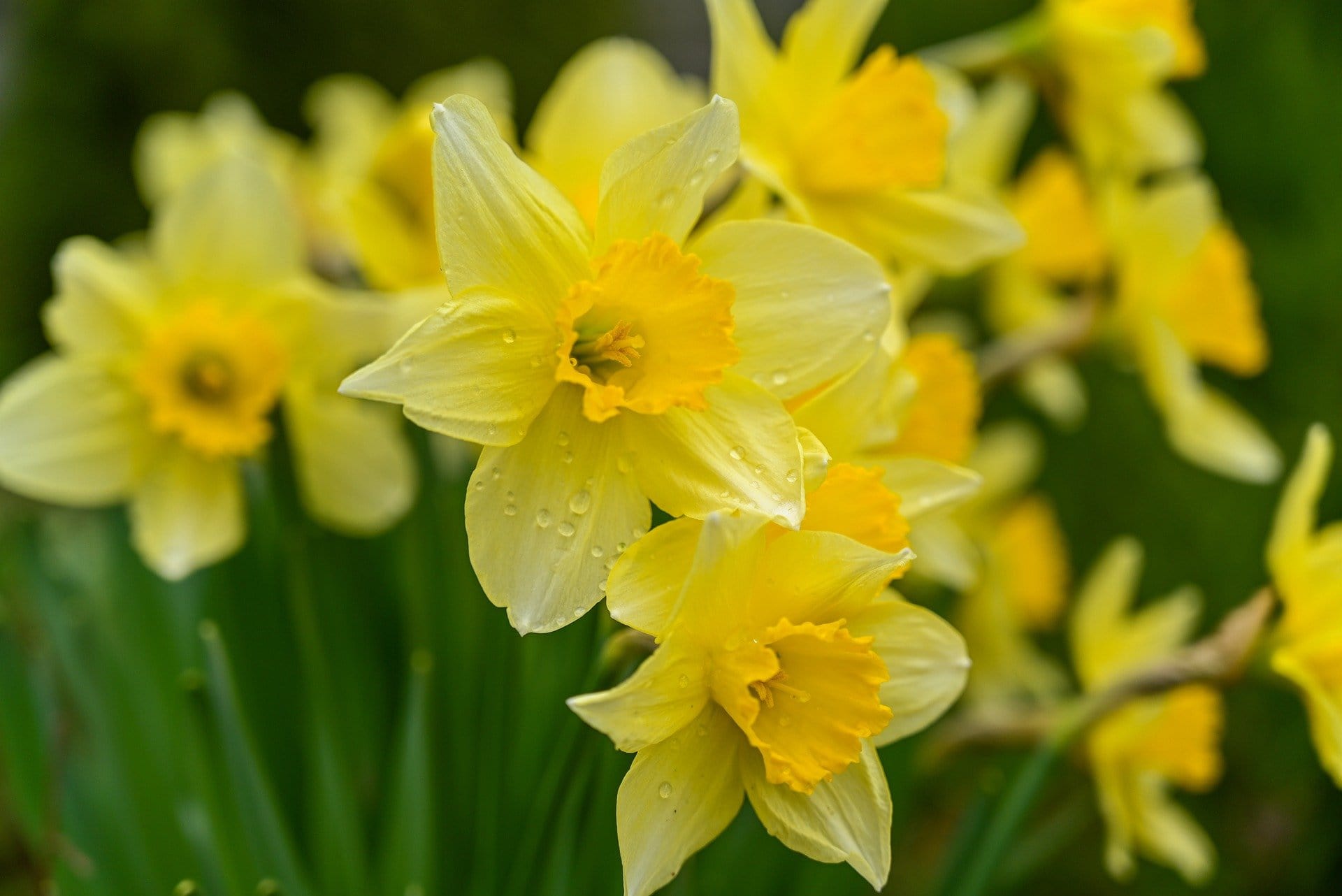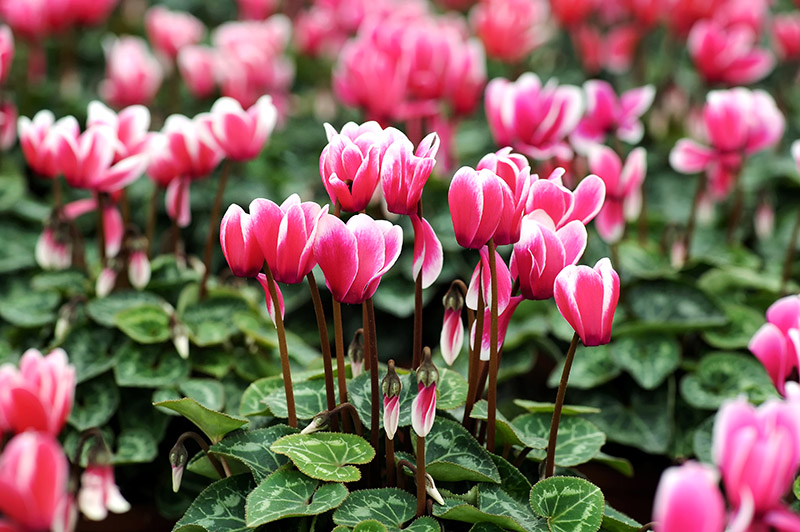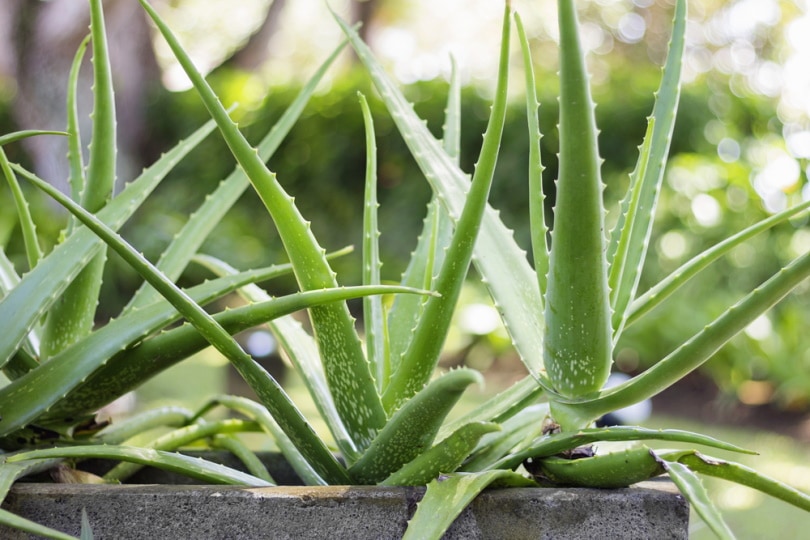[ad_1]
There are thousands of plant species, many of which have found their way into our homes to embellish our gardens and interiors. Unfortunately, all this beauty has a flip side, which is potentially endangering your curious feline companion. However, there is no need to panic, as only a small number of these plants pose a serious threat to your cat.
Still, to protect your inquisitive kitty, it is essential to learn to recognize these gorgeous but poisonous plants. Here are 12 plants that are particularly dangerous for cats and what you should do if your feline friend nibbles on them.

The 12 Plants That Are Poisonous to Cats
1. Sago Palm (Cycas revoluta)

Sago palms, known for their ornamental beauty, are increasingly popular in various climates. However, these plants can be deadly to cats. Ingesting any part of the sago palm, particularly the orange-reddish seeds, can lead to severe health issues, including gastrointestinal tract damage, neurological signs, liver failure, and even death.
Therefore, if you see your cat ingest any part of a Sago palm, you must take them immediately to your vet or emergency veterinary clinic. Even with aggressive treatment, the survival rate for a cat that has ingested a sago palm plant is only about 50%. Death will commonly occur without immediate treatment.
PetMD states, “A cat can die within a few hours of ingesting any part of this plant, even a seedling. If you suspect your cat has chewed on or ingested any part of the sago palm plant, contact an emergency veterinary hospital immediately.”1 Ingestion results in acute gastrointestinal signs (e.g., drooling, inappetence, vomiting, diarrhea, etc.) within 15 minutes to several hours after ingestion. Weakness, tremors, seizures and other central nervous system signs are usually seen within 4 hours, and liver failure 2-3 days after ingestion.
2. Lilies (Lilium)

Not all lilies are created equal when it comes to their impact on feline friends. Some lilies, like peace and calla lilies, contain insoluble oxalate crystals that may lead to milder signs, such as mouth, throat and esophageal irritation, resulting in drooling and discomfort.
Two species of lilies are particularly dangerous and contain toxins that can lead to kidney failure in cats- these are true lilies (Lilium species), and daylilies (Hemerocallis species). Ingesting even minute amounts of true lilies may lead to drooling, vomiting, anorexia, lethargy, and in severe cases, fatal kidney failure. All parts of these lilies, including the stems, leaves, flowers, and pollen, and even the water they sit in are toxic to cats.
Examples of dangerous lilies include:
- Asiatic lily (Lilium asiatica)
- Daylily (Hemerocallis species)
- Easter lily (Lilium longiflorum)
- Japanese Show lily (Lilium speciosum)
Some plants have “lily” in their name but carry different risks after ingestion. These include calla lilies, peace lilies, lilies-of-the-valley (which contain cardiac glycosides), and Peruvian lilies.
3. Daffodil (Narcissus spp.)

Whether you know them as narcissus, jonquil, or paper white, these attractive flowers hide a severe threat to your cat. They contain lycorine, a toxic alkaloid known for its potent emetic properties, triggering vomiting upon ingestion. Consuming any part of the plant can lead to severe consequences, but the bulb is the most toxic part. Signs include vomiting, diarrhea, abdominal pain, and the possibility of cardiac arrhythmias or respiratory distress.
4. Oleander (Nerium oleander)

Oleander, an evergreen outdoor shrub with delicate flowers, thrives in warm locations like Hawaii, California, and Texas. This plant, though lovely, is poisonous to various species, including cats, dogs, and humans! This is due to naturally occurring toxins called cardenolides, particularly oleandrin. These are classified as cardiac glycoside toxins and directly disrupt the heart’s electrolyte balance and cause arrhythmias along with other signs.
All parts of this plant are considered toxic. Even the water in a vase containing oleander may cause poisoning.
5. Cyclamen (Cyclamen spp.)

Cyclamen is an attractive houseplant that’s also known as the Persian violet and sowbread. However, it contains saponins, which can cause severe irritation, vomiting, diarrhea, and hemolytic anemia. Moreover, when cats chew or ingest any part of the plant, particularly the tubers or roots, it can lead to cardiac issues, abnormal heart rhythms, seizures, and even death. Therefore, stay cautious with these seemingly harmless plants, as their effects on your cat can be serious.
6. Poison Hemlock (Conium maculatum)

With a name like that, it’s no wonder this shrub is considered highly toxic to cats! Indeed, poison hemlock contains various alkaloids that are toxic to pets and can cause excessive drooling, diarrhea, paralysis, and even death.
7. Dumb Cane (Dieffenbachia)

Dieffenbachia, like other members of the Araceae family, contains insoluble calcium oxalate crystals in its sap. Simply nibbling on the leaves can lead to severe mouth pain, excessive drooling, and swelling that can lead to difficulty swallowing or breathing.
8. Azalea (Rhododendron spp.)

Azaleas belong to the same family as rhododendrons. However, these pretty flowers are toxic to cats. Ingesting just a handful of their leaves can cause vomiting, diarrhea, and excessive salivation. Worse still, when larger quantities are consumed, the consequences can be much more serious, leading to cardiac failure, seizures, collapse, and coma.
9. Tulip (Tulipa spp.)

Tulips are highly toxic to cats, and the highest concentration of toxins is found in the bulb. Chewing or ingesting the plant parts or bulbs can irritate your cat’s mouth and esophagus, leading to drooling, vomiting, and possibly diarrhea, depending on the amount consumed. Larger ingestions may cause more serious signs, including increased heart rate and breathing issues.
10. Autumn Crocus (Colchicum autumnale)

Autumn crocus, also known as meadow saffron, is a beautiful but poisonous plant to cats. Ingesting any part of this plant can result in severe gastrointestinal signs like drooling, vomiting, gastrointestinal bleeding, and bloody diarrhea. Furthermore, it can cause liver and kidney damage, respiratory failure, seizures, and even death.
11. Marijuana (Cannabis sativa)

Derived from the leaves and flowers of cannabis plants, marijuana contains both THC and CBD, with a higher concentration of the former. Marijuana may be legal in many places, but it can cause not-so-fun effects on your cat!
With the growing availability of marijuana for medical and recreational use, the Pet Poison Helpline has noted a significant 448% rise in cases of dogs and cats ingesting marijuana or marijuana-related products. This trend underscores the importance of keeping these substances out of your cat’s reach and seeking immediate veterinary care if ingestion occurs.
12. Aloe Vera (Aloe barbadensis miller)

According to the Pet Poison Helpline, the toxicity of aloe vera to pets has been somewhat “hyped up,” meaning it may not be as dangerous as previously claimed. However, since a cat may still experience mild gastrointestinal upset after ingesting it, it’s on the list.

What to Do If Your Cat Has Ingested a Poisonous Plant
- Take your cat to a safe spot, and remove any plant material.
- Check if your cat is breathing.
- Call your veterinarian or an emergency veterinary clinic and/or the ASPCA Animal Poison Control Center (1-888-426-4435) or the Pet Poison Helpline (1-855-764-7661).
- Do not induce vomiting or give your cat any home remedies unless specifically advised by a veterinarian.
- If possible, collect a sample of the plant, and bring it to the veterinary clinic.
- Keep calm but act fast. The time frame within which the veterinarian can decontaminate your cat in the event of poisoning is brief (“decontaminate” refers to removing the substance to reduce absorption and decrease the severity of the poisoning, usually by inducing vomiting).
As a reminder, here are the common signs to watch for if you suspect that your cat has ingested a poisonous plant:
- Drooling
- Nausea
- Vomiting
- Diarrhea
- Increased heart rate
- Increased respiratory rate
- Difficulty breathing
If you notice these signs, seek immediate veterinary care to ensure your beloved kitty’s safety.


Conclusion
Cats may have good instincts, but they don’t always know what’s best for them. Therefore, if you have any of these plants in your home or garden, make sure your pet does not have access to them. If it’s impossible to keep them out of your cat’s reach, it may be best to find these plants a new home.
The common saying “curiosity killed the cat” also serves as a grim reminder, and you certainly don’t want that to happen to your beloved feline companion.
Featured Image Credit: miezekieze, Pixabay
[ad_2]
Source link
